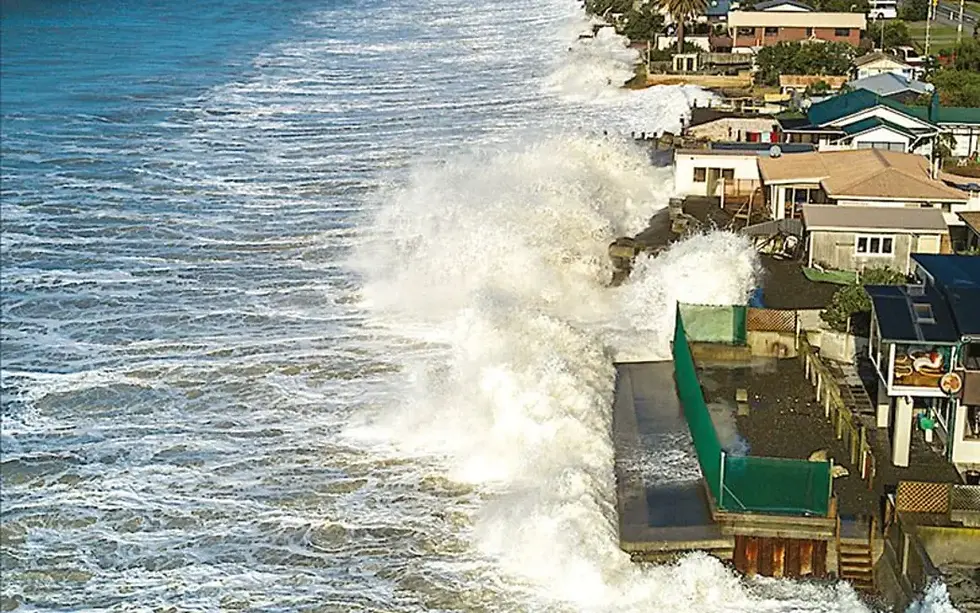Architecture : Arcology
- charlotteselve8
- 2 sept. 2023
- 2 min de lecture
In the ever-evolving landscape of urban planning and architecture, one concept stands out as a beacon of hope for sustainable and efficient living: Arcology.
This ambitious architectural movement envisions the fusion of architecture and ecology to create self-contained, self-sustaining megastructures.
But what does Arcology have to do with sustainable floating cities and the emerging concept of seasteading? Let's dive into the world of visionary urban design.
Arcology: A Marriage of Architecture and Ecology
Arcology, a term coined by architect Paolo Soleri in the mid-20th century, represents a revolutionary approach to urban living. At its core, Arcology seeks to integrate human habitats with natural ecosystems, forming harmonious, self-sustaining environments. These structures are often vertical, multi-purpose megastructures that accommodate thousands of residents, workers, and visitors.
Key features of Arcology include:
Vertical Design: Arcologies are typically designed as towering structures that minimize their footprint on the land while maximizing usable space.
Self-Sufficiency: These self-contained ecosystems aim to generate their energy, food, and resources while minimizing waste and environmental impact.
Mixed-Use Spaces: Arcologies promote mixed-use spaces, incorporating residences, offices, recreational areas, and more within the same structure, reducing the need for extensive transportation.
Greenery Integration: Green spaces, gardens, and even farms are often integrated into the design, contributing to improved air quality and aesthetic appeal.
Sustainable Technologies: Advanced technologies, such as renewable energy systems, advanced waste management, and efficient transportation systems, are integral to Arcology designs.
Sustainable Floating Cities: Arcology Application
While the concept of Arcology has been primarily associated with land-based megastructures, its principles can be adapted to floating cities.
As the challenges of urbanization, climate change, and rising sea levels become more pressing, innovative thinkers have explored the idea of creating sustainable communities on water.
Floating cities offer unique advantages:
Adaptation to Rising Sea Levels: With sea levels on the rise, floating cities provide a viable solution for coastal areas facing inundation.
Self-Sufficiency: These cities can incorporate technologies like solar panels, desalination plants, and aquaculture to produce their own energy, water, and food.
Reduced Environmental Impact: Floating cities can minimize land use, reduce urban sprawl, and lessen the impact on delicate coastal ecosystems.
Resilience to Natural Disasters: Floating structures are inherently resilient to some natural disasters like earthquakes.
Seasteading: The Frontier of Oceanic Living
Seasteading takes the concept of floating cities a step further by advocating for the establishment of autonomous, self-governing communities on the open sea. These floating nations would have their own laws, regulations, and governance structures.
Key aspects of seasteading include:
Innovative Governance: Seasteading communities aim to experiment with new forms of governance, potentially offering solutions to political and societal challenges.
Sustainable Practices: Similar to floating cities, seasteading communities prioritize sustainability, often incorporating eco-friendly technologies and practices.
Economic Opportunities: Seasteads can provide unique economic opportunities, from aquaculture and tourism to research and development.
Dynamic Experimentation: Seasteading allows for experimentation with societal models, attracting individuals and organizations seeking alternatives to traditional governance.
A Vision for Tomorrow
As our world grapples with the complexities of urbanization, climate change, and societal challenges, Arcology, sustainable floating cities, and seasteading stand as visionary concepts that offer potential solutions.
These concepts push the boundaries of what's possible in urban design and invite us to imagine a future where sustainable, resilient, and adaptable communities thrive in harmony with our planet's changing landscapes.


Commentaires